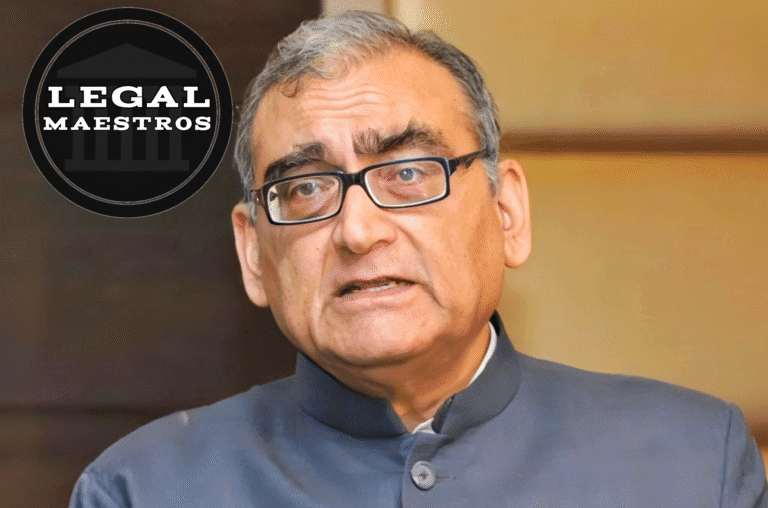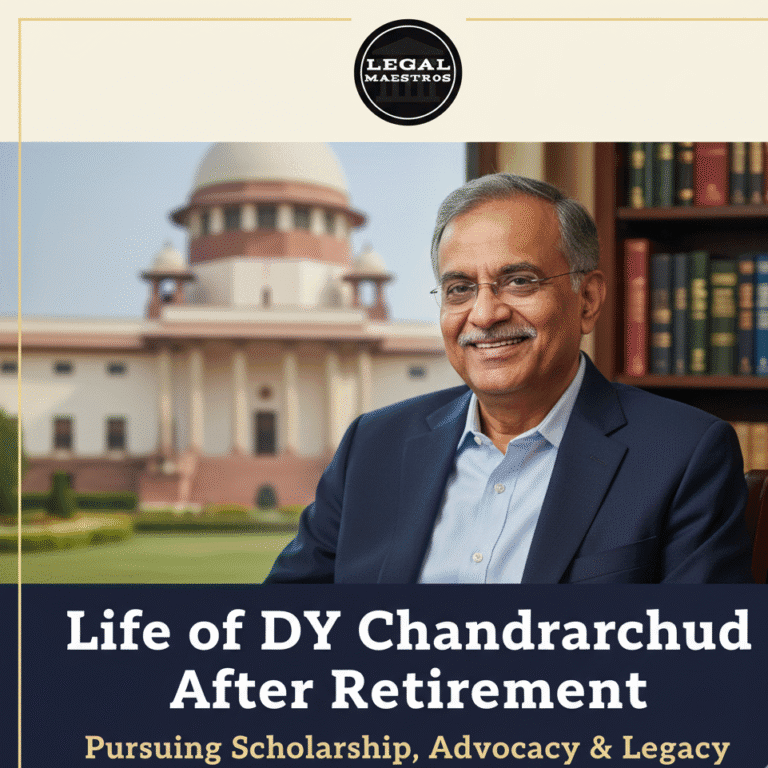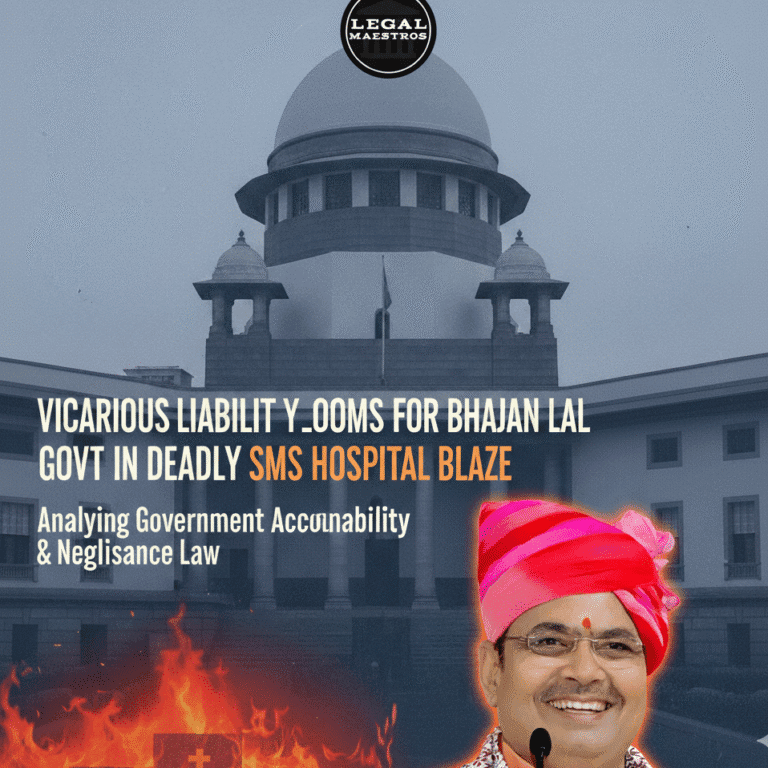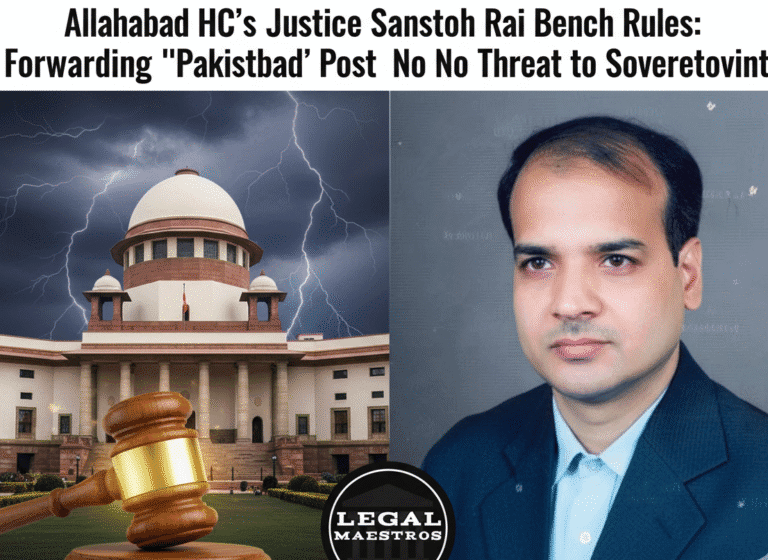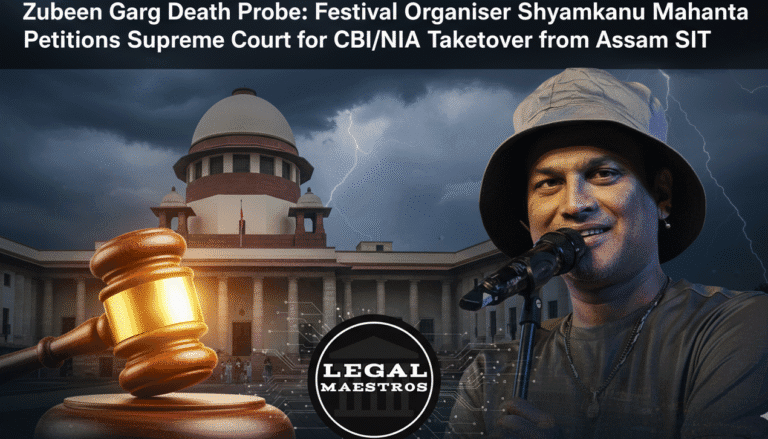
Misuse of 498A IPC
-Apurv Shaurya*
The recent judgment of the Supreme Court in Shivangi Bansal v. Sahib Bansal 2025 INSC 883 highlights several systemic issues within the Indian legal framework that continue to leave litigants and citizens alike searching for consistency and clarity in the law.
To understand the context, it is essential to revisit the issue of Section 498A of the Indian Penal Code, introduced in 1983 with the intention of protecting women from cruelty by their husband and relatives. While the legislative intent was undoubtedly progressive and rooted in the urgent need to combat domestic violence, the provision’s broadly worded nature soon led to its misuse. In 2002, the Delhi High Court in Savitri Devi v. Ramesh Chand (Cr. Rev. 462 of 2002) noted with concern that Section 498A was often being weaponized in matrimonial disputes, observing that leaving such a powerful provision in the hands of poorly trained police officers was akin to giving “a tool in the hands of bad and unskilled masters.” The Court warned that this was not only harmful to the institution of marriage but detrimental to the overall health of society. More recently, in Swapan Kumar Das v. State of West Bengal 2023 SCC OnLine Cal 2427, the Calcutta High Court went so far as to describe the misuse of Section 498A as a form of “legal terrorism.”
For any queries or to publish an article or post or advertisement on our platform, do call at +91 6377460764 or email us at contact@legalmaestros.com.
Over the years, the Supreme Court has acknowledged and addressed this issue in multiple landmark decisions. In Arnesh Kumar v. State of Bihar 2014 (8) SCC 273, the Court laid down specific guidelines to prevent the routine arrest of the accused, emphasizing the difference between power to arrest and necessity of arrest. This concern was recently reiterated in Ghanshyam Soni v. State (Govt. of NCT of Delhi) 2025 SCC Online SC 1301, as well, where the court expressed serious reservations about the continued abuse of the provision.
Despite repeated concerns, the Legislature has taken no meaningful steps to amend or refine the provision to prevent its misuse. This legislative inaction has, in turn, compelled the Constitutional Courts to take upon themselves the task of balancing the original protective intent of the provision with the growing evidence of its misuse. In doing so, the courts have entered a difficult terrain, which is attempting to read safeguards into a statutory framework that remains unchanged, while simultaneously trying to uphold the rule of law and constitutional values.
In Rajesh Sharma v. Union of India 2018 (10) SCC 472, the Supreme Court, acknowledging the growing misuse of Section 498A of the IPC, issued detailed guidelines, including a directive to establish at least one Family Welfare Committee (FWC) in each district under the supervision of the District Legal Services Authority. It was further directed that every complaint under Section 498A, whether received by the police or the Magistrate, must first be referred to such a committee for scrutiny, and no arrest should ordinarily be made until the committee submitted its report. The Investigating Officer or Magistrate was then to consider the report on its own merits before proceeding.
For any queries or to publish an article or post or advertisement on our platform, do call at +91 6377460764 or email us at contact@legalmaestros.com.
However, in Social Action Forum for Manav Adhikar v. Union of India 2018 (10) SCC 443, a three-judge Bench of the Supreme Court partially modified these directions, removing the mandate for Family Welfare Committees, holding that such a mechanism has no foundation in the Code of Criminal Procedure or in any statutory framework. The Court noted that directing the constitution of such committees amounts to judicial overreach into the domain of legislation which is an area reserved for Parliament.
In a surprising turn, in 2022, the Hon’ble Allahabad High Court in Mukesh Bansal v. State of U.P. 2022 SCC Online All 395 directed the formation of Family Welfare Committees, taking guidance from the Social Action Forum Case. This reliance is particularly perplexing, given that Social Action Forum had unambiguously held that the direction for formation of such committees lies outside the judicial domain. More strikingly, this direction of the High Court has been upheld by a Division Bench of the Supreme Court in Shivangi Bansal Case in 2025, without any reference to, or reconciliation with, the binding precedent laid down by the larger bench in Social Action Forum, thus bringing in the Family Welfare Committee in the legal system, once again.
While much has been said about the misuse as well as necessity of Section 498A of IPC, this episode reveals that the problem runs deeper than abuse of a single provision. It reflects issue that go beyond misuse and point to larger structural and institutional concerns, but is not much discussed. What may initially appear to be a mere conflict in judicial reasoning, in fact, exposes three pressing issues within the legal system that merit attention:
For any queries or to publish an article or post or advertisement on our platform, do call at +91 6377460764 or email us at contact@legalmaestros.com.
- A Poly-vocal Supreme Court leads to conflicting Laws
Unlike the Supreme Court of the United States, which hears matters en banc, that is, with all judges sitting together as one bench, the Supreme Court of India typically functions through smaller benches comprising two or three judges. Given the high volume of litigation in India, en banc hearings are practically unfeasible, as involving all judges in every matter would exponentially increase pendency. As a result, division benches or three-judge benches have become the standard mechanism for adjudication.
However, this structure presents certain challenges. It is not uncommon for division bench decisions to conflict with one another. Since every bench of the Supreme Court, regardless of its size, exercises the authority of the Court under Article 141 of the Constitution, its pronouncements are binding as the “law of the land,” unless subsequently overruled or held per incuriam. Trial courts, lacking the authority to declare decisions of the Constitutional Courts as per incuriam, often find themselves caught in the crossfire of conflicting judicial directions. Recognising this systemic issue, the late Senior Advocate Fali S. Nariman, in his book India’s Legal System: Can It Be Saved? At pg. 138, had observed that division bench decisions should not to be treated as binding law in every instance for the purpose of Article 141.
Importantly, it is not contemptuous to point out that a judgment of the Supreme Court may have been rendered in contravention of a larger bench ruling. In fact, the Supreme Court itself has acknowledged such instances. In 2024 in Karnail Singh v. State of Haryana 2024 SCC Online SC 961, the Court recalled a 2022 decision upon realising that it had been passed in ignorance of a Constitution Bench judgment. Similarly, in Santosh Satishbhushan Bariyar v. State of Maharashtra 2009 (6) SCC 498, the Court noted that as many as seven prior decisions were contrary to the Constitution Bench ruling in Bachan Singh v. State of Punjab. This process of correcting course through overruling or applying the per incuriam doctrine is a well-established feature of the common law tradition.
For any queries or to publish an article or post or advertisement on our platform, do call at +91 6377460764 or email us at contact@legalmaestros.com.
Given the sheer volume of case law and the absence of a structured system for managing precedential coherence, occasional judgments rendered in ignorance or contradiction of larger bench decisions are not uncommon. For our present issue, the fact that there is a lack of reference to the Social Action Forum case in the Shivangi Bansal Case hints towards an ignorance of a larger bench precedent. It is, therefore, not only permissible but essential for litigants, lawyers, and scholars to identify and bring to light such conflicts, in the interest of maintaining doctrinal clarity and judicial discipline.
- No Inherent Power with the criminal courts.
The misuse of penal laws continues to impose a serious burden on the criminal justice system. In cases involving non-compoundable offences, even when an F.I.R. is filed with malicious or vindictive intent, there is no legal provision for its withdrawal. The only remedy available is to seek quashing of the F.I.R. However, neither the CrPC (1973) nor the BNSS (2023) confers power upon trial courts to quash F.I.Rs., reserving it exclusively for High Courts, either through their inherent jurisdiction or constitutional powers. As a result, even minor or private disputes given a criminal color, are taken to the High Courts, increasing their caseload and consuming time that could otherwise be used for more serious matters. For people from rural areas or lower-income backgrounds, approaching the High Court is also not easy. It involves travel, procedural hurdles, and significant legal expenses, making access to justice difficult and unequal.
While Section 151 of the Code of Civil Procedure, 1908 expressly recognizes the inherent powers of civil courts, it is perplexing that the Bharatiya Nagarik Suraksha Sanhita (BNSS) omits a corresponding provision for criminal courts just like the CrPC, 1973. Notably, both the Law Commission of India in its 1958 report and the Malimath Committee in 2003 had recommended the conferment of statutory inherent powers upon criminal courts as well.
For any queries or to publish an article or post or advertisement on our platform, do call at +91 6377460764 or email us at contact@legalmaestros.com.
- Legislative Underreach
Articles 142 and 226 of the Constitution confer extraordinarily wide-ranging powers upon the Supreme Court and the High Courts, respectively. Of these, Article 142 is particularly unique and sui generis in nature. No prior constitutional framework in comparative jurisprudence has vested such sweeping authority in an apex court. Yet, this expansive power comes with an enduring question – what are its limits?
The Constituent Assembly debates offer little guidance, as Article 142 was adopted with virtually no debate. Consequently, its limits have been shaped entirely through judicial interpretation. The boundaries of this power remain self-imposed, with the Supreme Court invoking the doctrine of separation of powers and functions to temper its own reach. However, the line between judicial activism and judicial overreach is often blurred, and in practice, it varies significantly across benches and individual judges.
Over time, the Supreme Court itself has raised concerns about crossing constitutional boundaries. In Divisional Manager, Aravali Golf Club v. Chander Haas 2008 (1) SCC 683, the Court cautioned against encroachment into the executive domain, observing that “judges must know their limits and must not try to run the government. They must have modesty and humility, and not behave like emperors.” Yet, this cautionary stance is far from unanimous. Justice Kurian Joseph, in his article Judicial Legislation published in(2016) 2 SCC J-18and Dr. Justice B.S. Chauhan, in The Legislative Aspect of the Judiciary (2003), have both defended judicial intervention where legislative or executive lacuna threatens justice or creates a vacuum.
For any queries or to publish an article or post or advertisement on our platform, do call at +91 6377460764 or email us at contact@legalmaestros.com.
In this regard, the perspective of Fali S. Nariman, again, remains particularly insightful. In his article The Case of Judicial Activism, he argued that much of what is labeled as judicial overreach stems from legislative and executive underreach. In situations where a gap in law exists, expecting the judiciary to remain passive is, in his words, “naive in practice.”
Despite decades of judicial concern and consistent acknowledgment of misuse of 498A IPC in matrimonial disputes, the legislature has chosen not only to retain the provision but to replicate it verbatim in the Bharatiya Nyaya Sanhita (BNS), 2023. The Supreme Court, in Achin Gupta v. State of Haryana 2025 (3) SCC 756, even urged the legislature to amend the provision before the BNS came into effect, so as to avoid repeating the same mistakes, yet, legislative inaction has ensured that the structural defects of Section 498A continue to persist in its new avatar.
In the end, what remains is a legal system burdened by conflicting judicial directions, a broadly framed penal provision vulnerable to continued misuse, and a Supreme Court caught in a cycle, torn between breaching the doctrine of separation of powers to address legislative inaction, or upholding it by exercising restraint, even at the cost of justice. Parliament has repeatedly expressed discomfort with the judiciary’s expansive use of Article 142 or its forays into the legislative domain. Notably, as reported by the Indian Express, the former Vice President of India described Article 142 as a “nuclear missile” available to the judiciary “24×7” to override democratic processes. Yet, the citizen’s fundamental demand for legal clarity and fair procedures remains unmet. Left stranded in the tug-of-war between the legislature and the judiciary, individuals continue to face confusion, harassment, and avoidable litigation involving time, cost, and emotional toll.
For any queries or to publish an article or post or advertisement on our platform, do call at +91 6377460764 or email us at contact@legalmaestros.com.
* PhD Scholar, National Law University, Delhi. E-Mail – apurv.shaurya23@nludelhi.ac.in


